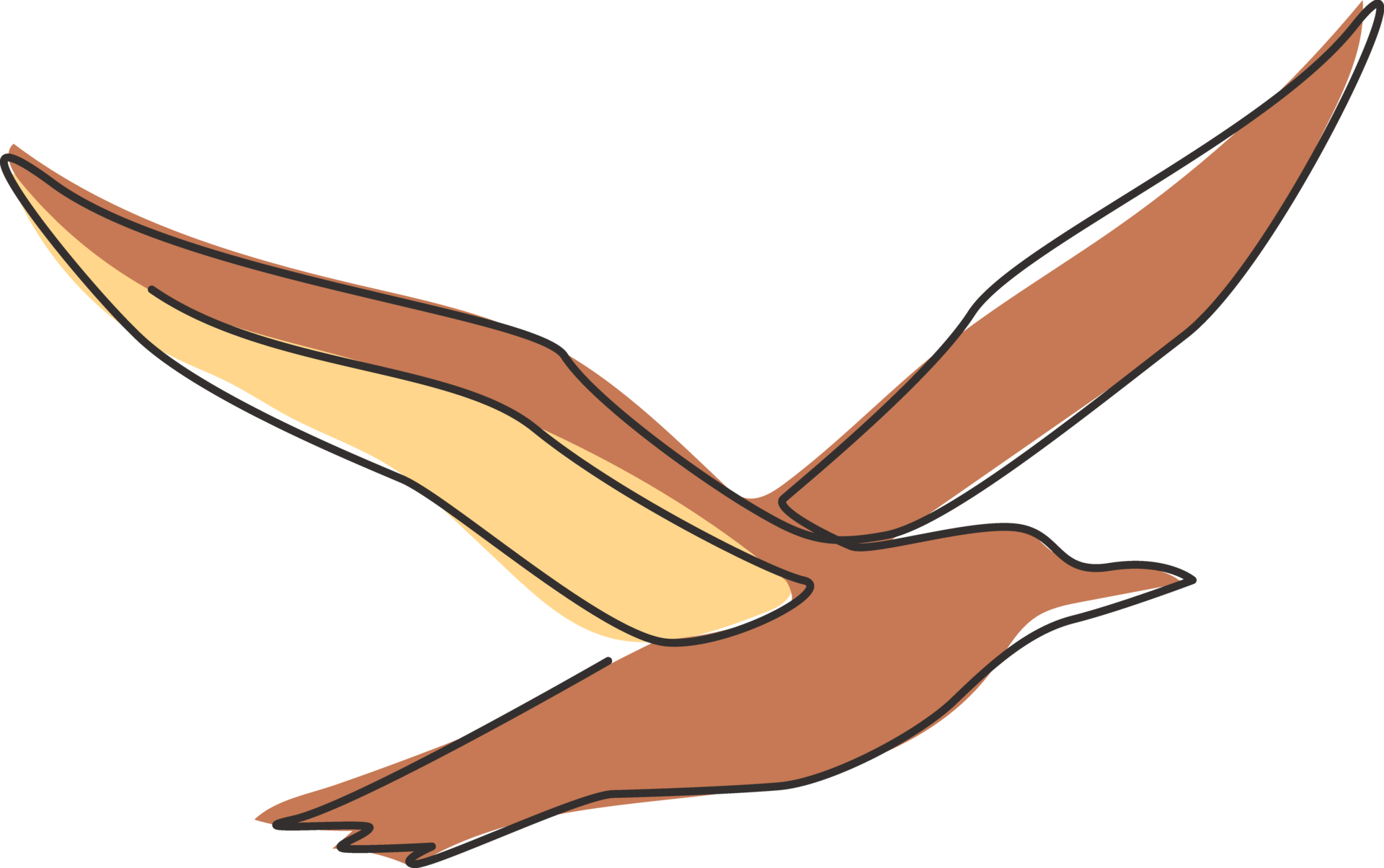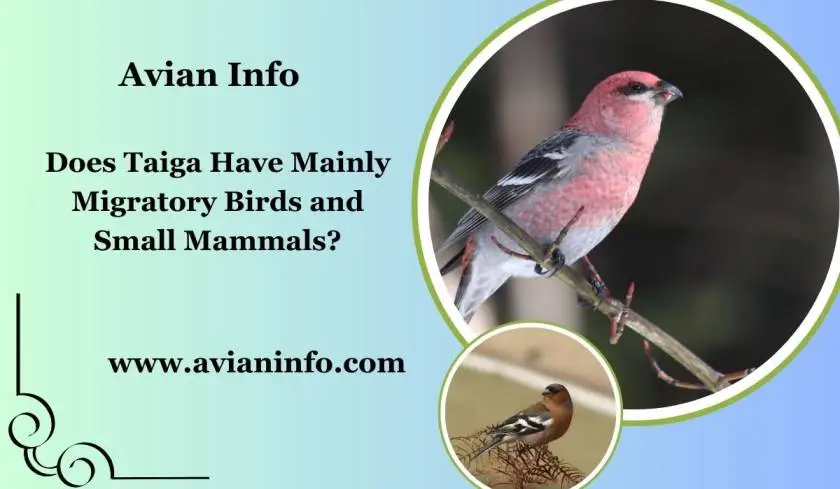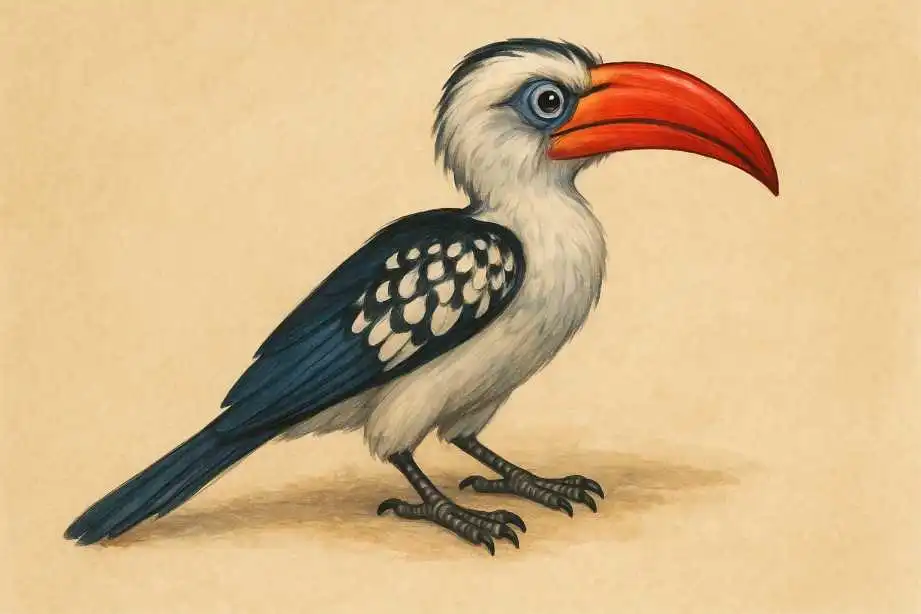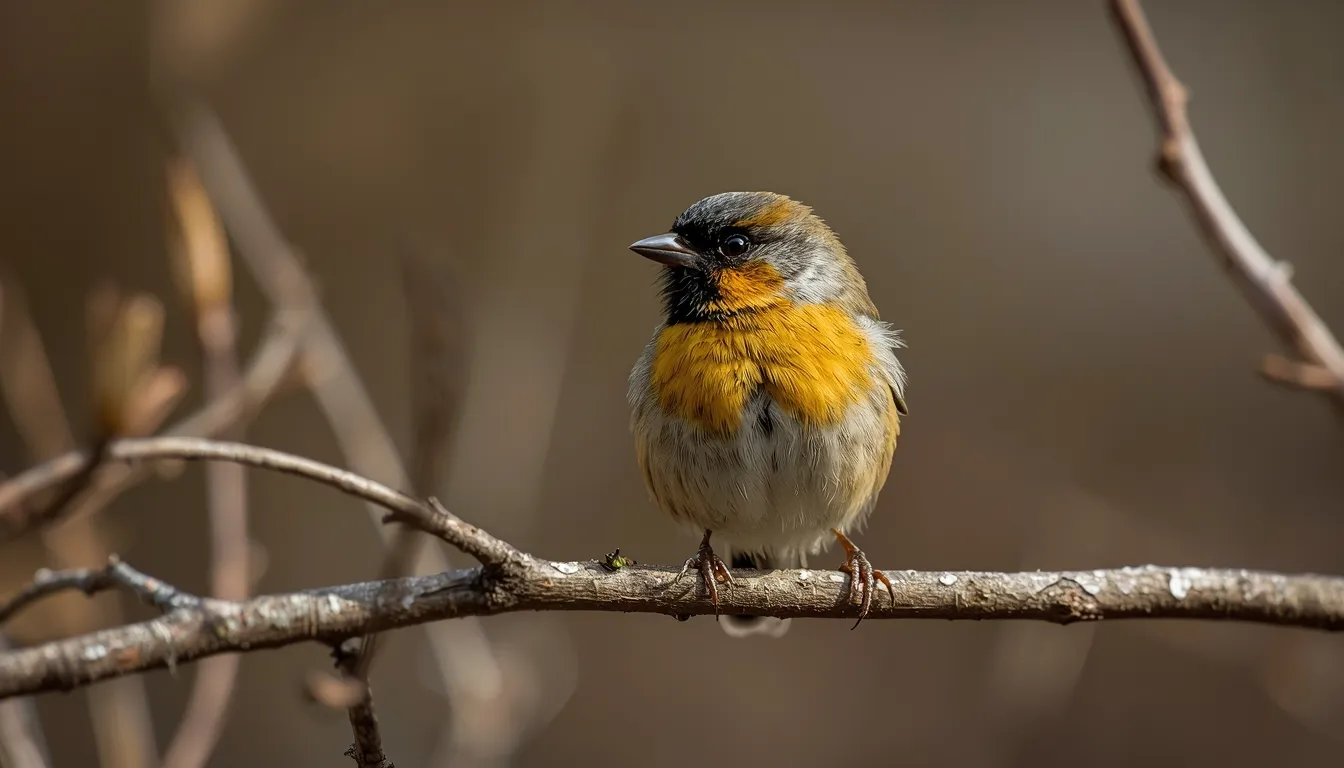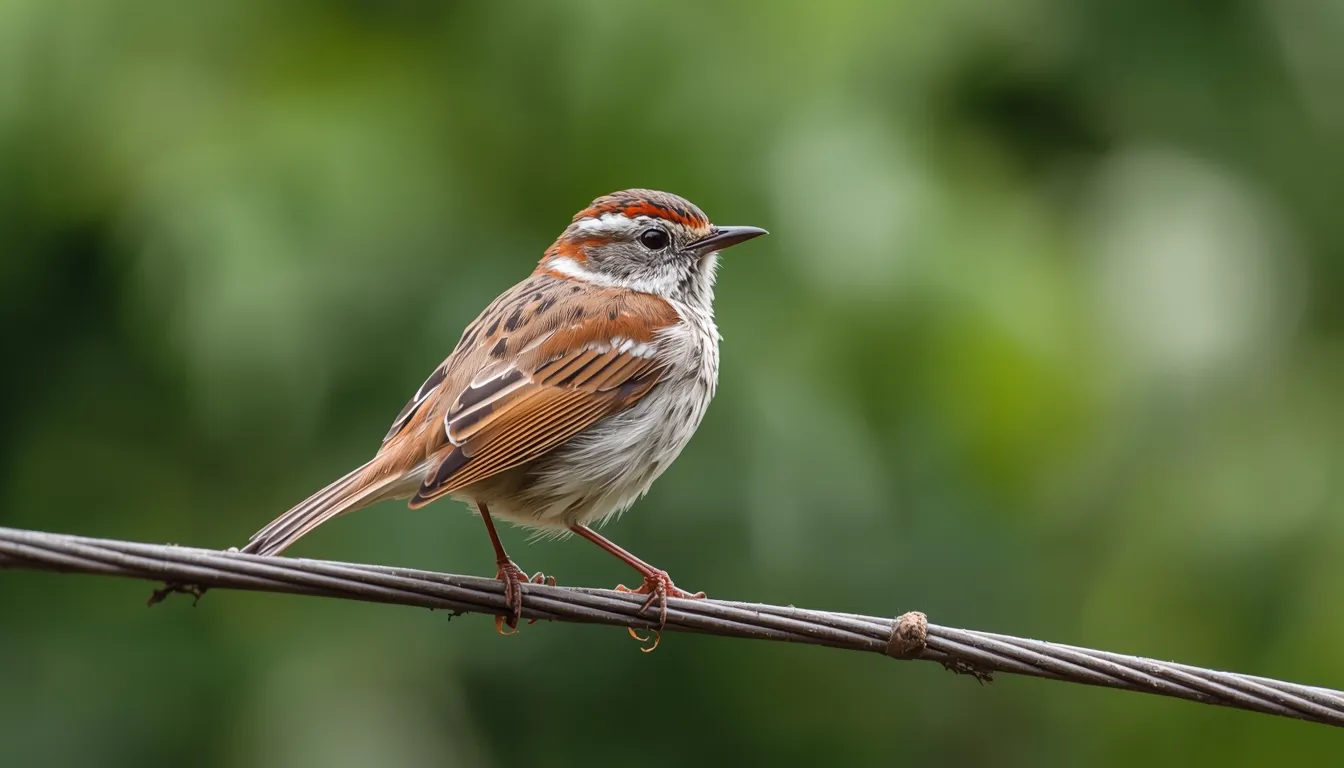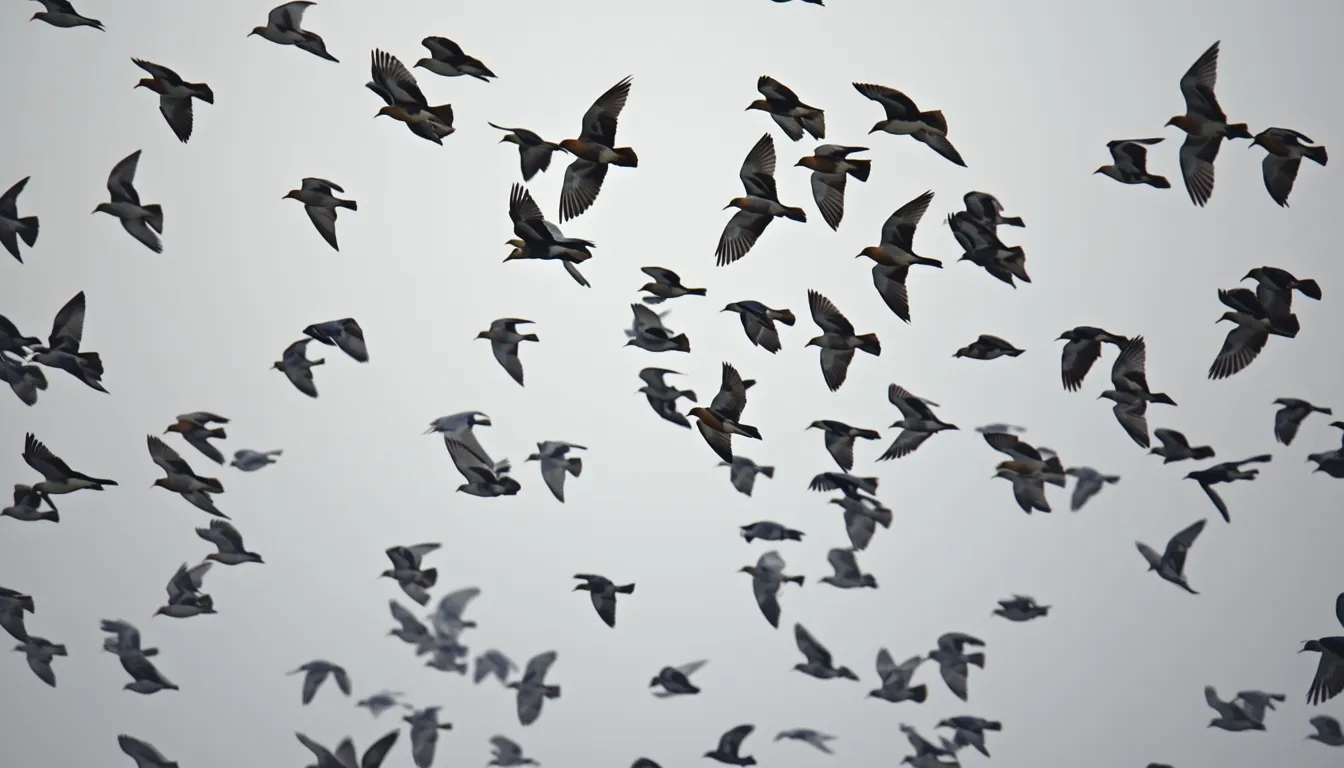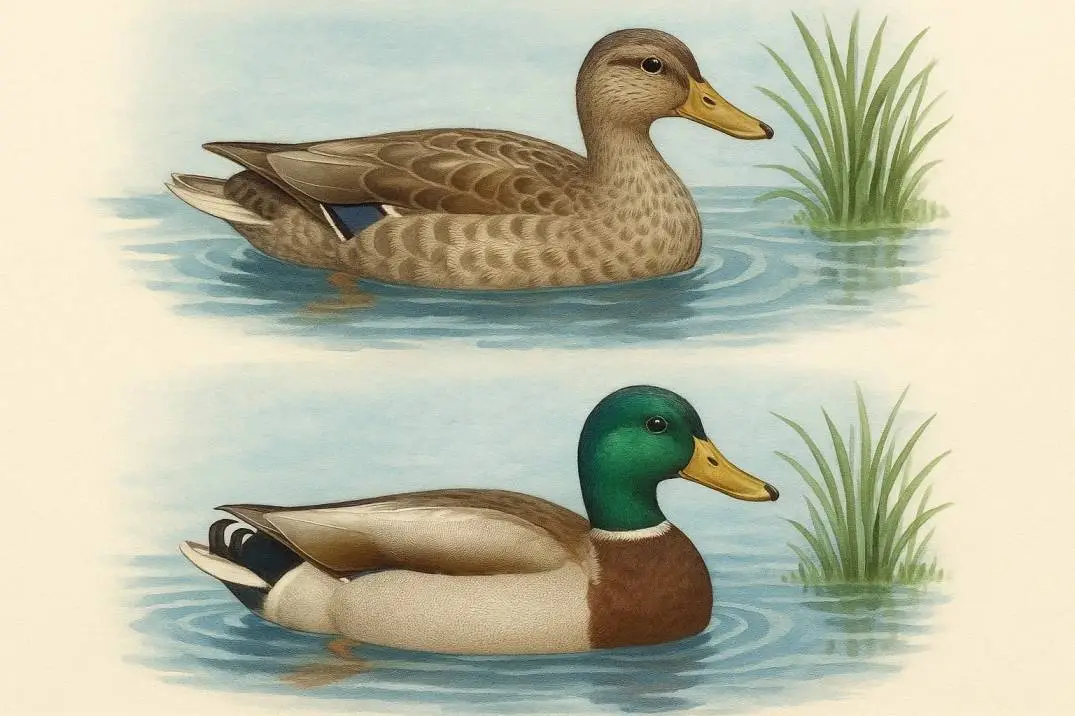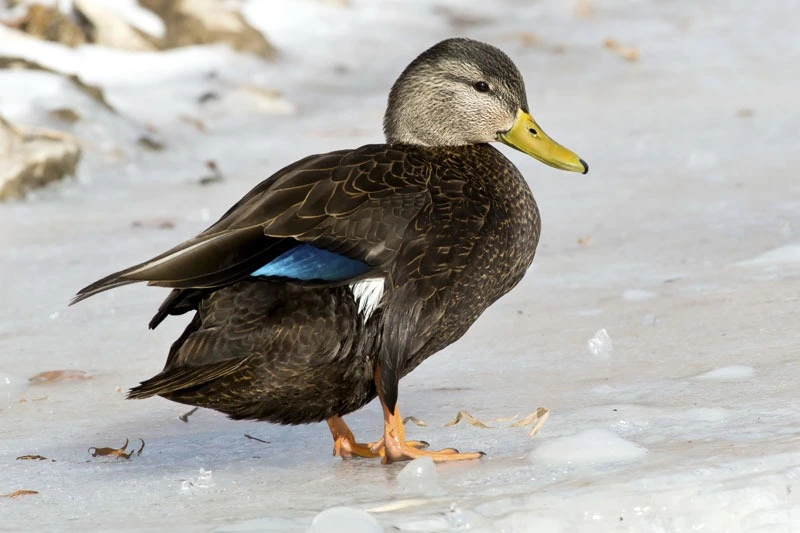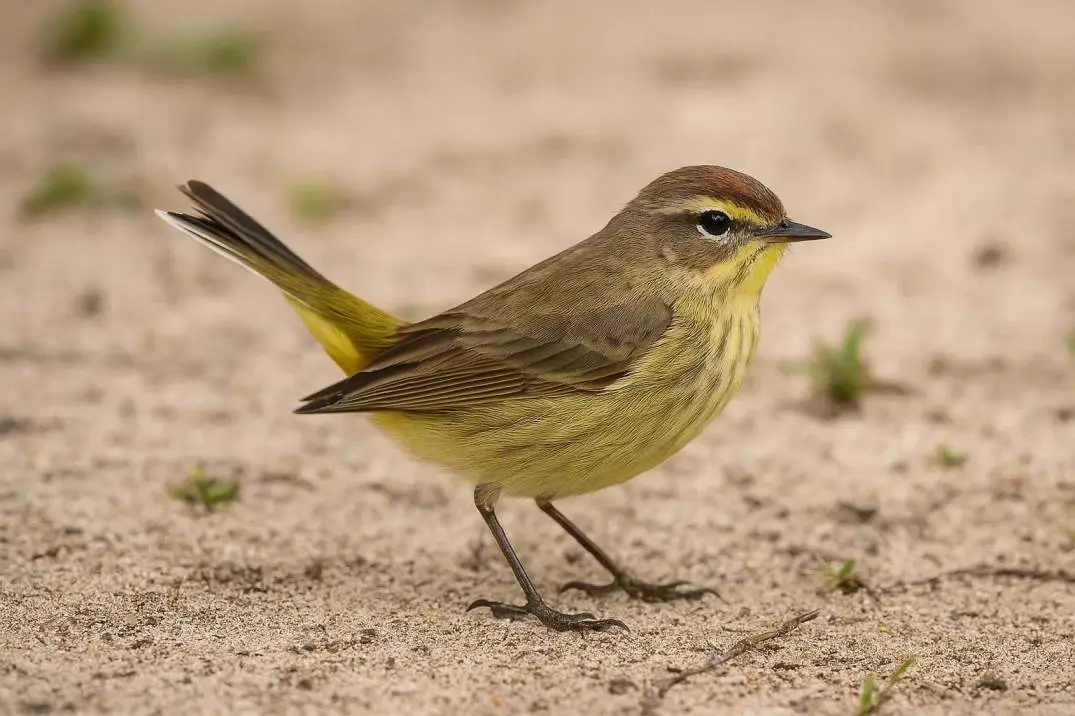The red-headed woodpecker is a remarkable creature that flits among the trees in the middle of North America's woodlands. With its striking crimson crest, stark white belly, and inky black wings, this colorful bird is not only a visual feast but also an intriguing natural wonder.
Its characteristic drumming and acrobatic stunts on trees are well-known, and it expertly chips away at bark to expose hidden insects and make nesting chambers that serve as homes for other forest residents.
Get ready to learn about the nuances of this vibrant carpenter's behavior, habitat, and crucial function in the environment as we explore its fascinating world. Come along with us as we honor the peaceful beauty of the red-headed woodpecker, a symbol of the vast diversity that flourishes in our forests, and the artistry of nature.
With a completely crimson head, a snow-white body, and wings that are half white and half inky black, the stunning Red-headed Woodpecker has such striking patterns that it has been dubbed a "flying checkerboard."
They are skilled at capturing insects in the air and consume many acorns and beech nuts, frequently storing extra food in tree cracks for later use. These birds behave differently from most other woodpeckers. Due to habitat degradation and changes in its food source, this majestic bird has seen a significant drop in the last fifty years.
Fascinating Facts About the Red Headed Woodpecker
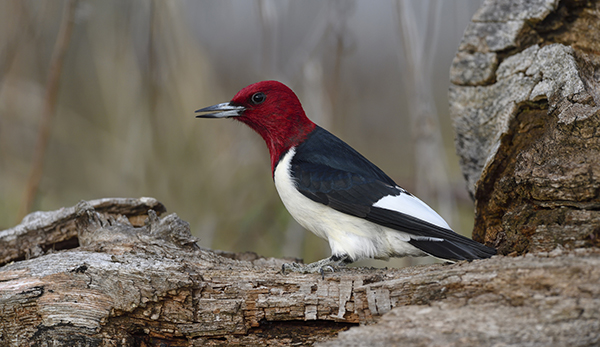
Red-headed Woodpeckers can be found in pine savannas, dead timber in wetlands, and broad, dispersed woodlots in agricultural regions.
As these high-contrast woodpeckers flit between perches, take your time walking, listen for tapping or drumming, and watch for distinctive black-and-white flashes. In intense brightness, it can be challenging to notice the red head. A Red-headed Woodpecker can also be identified by its loud, piercing Weah! sounds.
Backyard Tips
Red-headed In winter, woodpeckers, particularly suet, will occasionally visit feeders. In addition to a variety of fruits (such as apples, pears, cherries, blackberries, raspberries, strawberries, grapes, mulberries, and poison ivy fruits), they will consume seeds, corn, acorns, beechnuts, pecans, and more.
Interesting Facts
Only four woodpeckers in North America are known to store food, and only the Red-headed Woodpecker is known to cover the food with bark or wood. It conceals seeds and insects in roof shingles, fenceposts, bark, and wood crevices. Grasshoppers are frequently kept alive but crammed into cracks so tightly that they are unable to get out.
Related Article: Why Do Woodpeckers Like to Hammer on Houses? And What Can I Do About It?
The Red-headed Woodpecker is a ferocious protector of its home range. They might damage other birds’ nests, remove eggs from nests and nest boxes belonging to other species, or even get inside duck nest boxes and puncture the duck eggs.
The twentieth-century epidemics of Dutch elm disease and chestnut blight were advantageous to the Red-headed Woodpecker. Even while these diseases decimated trees, they gave woodpeckers plenty of places to nest and feed.
A position in human civilization has been won by the handsome Red-headed Woodpecker. The species was used as a war sign by Cherokee Indians, and also appears in Longfellow's epic poem The Song of Hiawatha, which describes how a grateful Hiawatha handed the bird its red head as a token of appreciation for its service.
- The Red-headed Woodpecker is also known as the flying board, half-a-shirt, shirt-tail bird, pennant bird, and jelly coat, among other nicknames.
- Red-headed woodpecker fossils dating back as far as two million years have been discovered in Florida, Virginia, and Illinois.
- In the 1700s, renowned ornithologist Alexander Wilson credited the Red-Headed Woodpecker as the "spark bird," or the species of bird that ignites a person's interest in birds.
- The oldest known Red-headed Woodpecker lived to be at least nine years and eleven months old and was recorded in Michigan in 1926.
The Four Keys to ID
Size & Shape
Red-headed Small woodpeckers have strong, spike-like bills, short, stiff tails, and fairly large, domed heads.
Pattern of Color
Adults have black backs with big white patches in the wings, bright-red heads, and white underparts, which, when perched, make the lower back appear completely white. The heads of immatures are gray-brown, and rows of black specks are seen close to the trailing edges of the white wing patches.
Behavior and Social Structure
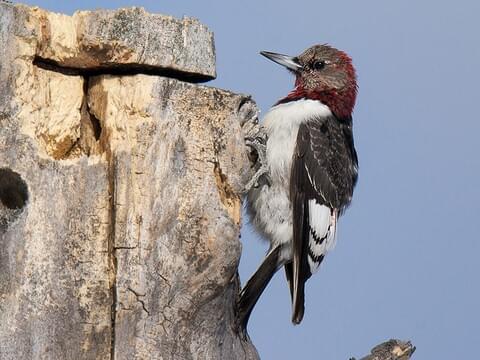
Red-headed Woodpeckers seek for insects on the soil and catch them in flight as an alternative to using the typical woodpecker technique of hammering at wood. They consume a lot of fruit and seeds as well. Compared to the Red-bellied Woodpecker, their raspy calls are scratchier and shorter.
Read Also: Black Capped Chickadees: Nature's Little Acrobats 2024
Environment
Red-headed Pine deserts and other forest types with distinct understory habitats are home to woodpeckers. Red-headed Woodpeckers are drawn to open pine plantations of pine, tree rows in agricultural regions, and standing timber in wetlands such as beaver swamps.
Diet and Feeding Habits
The diet of red-headed woodpeckers includes nuts, fruits, and insects. In general, they consume roughly two-thirds plant matter and one-third material from animals, primarily insects.
They eat insects such as grasshoppers, beetles, cicadas, flies, and beekeepers. Among the woodpeckers of North America, they are among the most proficient flycatchers (the Lewis's Chestnut is their nearest rival). They usually fly out to capture aerial insects after seeing them from a perch on a fencepost or tree branch.
Red-headed In addition to eating seeds, nuts, corn, fruits and vegetables and other foods, woodpeckers occasionally raid bird nests to consume eggs and nestlings. They also frequently consume mice and adult birds.
In the summer, they feed on the ground and as high as 30 feet above the forest floor; in the winter, however, they browse higher in the trees. Red-headed Woodpeckers mostly consume nuts like acorns, beech nuts, and pecans, but they also catch insects on warm winter days.
Red-headed Woodpeckers store food by squeezing it under roof shingles or into tree cracks. During the colder months, they frequently move the live grasshoppers, beech nuts, acorns as cherries, and corn from one location to another before consuming them.
How to Spot a Red-Headed Woodpecker in the Wild?
Emma Greig, project manager of Project FeederWatch, describes the Giant red headed woodpecker big, recognizable color patches as lacking any striations, stripes, or variegation coloration. This stunning bird features inky black wings with white spots, a snow-white body, and a crimson head.
The vivid, striking colors are worn by both sexes. Their wingspan is 17 inches, and their length is 9-1/4 inches. The common red-bellied woodpecker is among the several woodpeckers with some red on their heads. These birds with similar names are frequently confused by birdwatchers. One of the few people with a complete head of scarlet, however, is the red-headed.
The nape and crown of the red-bellied woodpecker are red. Uncertain whether you're observing a Giant red headed woodpecker? Find out how to recognize additional woodpecker species in North America.
FAQ's- Red Headed Woodpeckers
Do Red Headed Woodpeckers visit bird feeders?
Although they are not frequent visitors like some other species, red-headed woodpeckers are able to attend bird feeders. They prefer insects, seeds, nuts, and fruits, and they are more inclined to be found browsing in open areas with trees. Although they may be spotted at feeders, particularly ones that provide peanuts or suet, this is not a consistent method of drawing them in.
What is a Red headed woodpeckers favorite food?
Although they eat a variety of foods, red-headed woodpeckers especially like fruits, acorns, and insects. Additionally, they have been observed to frequent feeders for suet and other delicacies, as well as to consume seeds and beech nuts.
What does it mean when a woodpeckers shows up?
The appearance of a woodpecker can have symbolic and utilitarian connotations. Practically speaking, it could mean they are looking for food (insects), attempting to construct a nest, or marking their territory, which could result in them scratching at your home. Woodpeckers are frequently interpreted symbolically as communicators of tenacity, diligence, and resolve, urging you to maintain concentrate on your objectives and have faith in your own abilities.
Do woodpeckers return to the same tree?
It's true that not all woodpeckers return to the same tree. If the nest cavities are in good shape, species like the Red-headed Woodpecker and Northern Flicker have been observed to use them again, sometimes for several years. Every year, other woodpeckers, such the Downy and Hairy Woodpeckers, have a tendency to dig new cavities.
Yellow-bellied sapsuckers frequently return to the same tree or shrub to dig new cavities because they favor live trees. Additionally, Red-bellied Woodpeckers frequently dig new cavities every year, while they could nest in the same tree and frequently position the new hollow underneath the one from the year before. Even though they aren't known to reuse nest cavities very often, Pileated Woodpeckers will commonly return to the same location and dig new roosting cavities every year to provide refuge.

